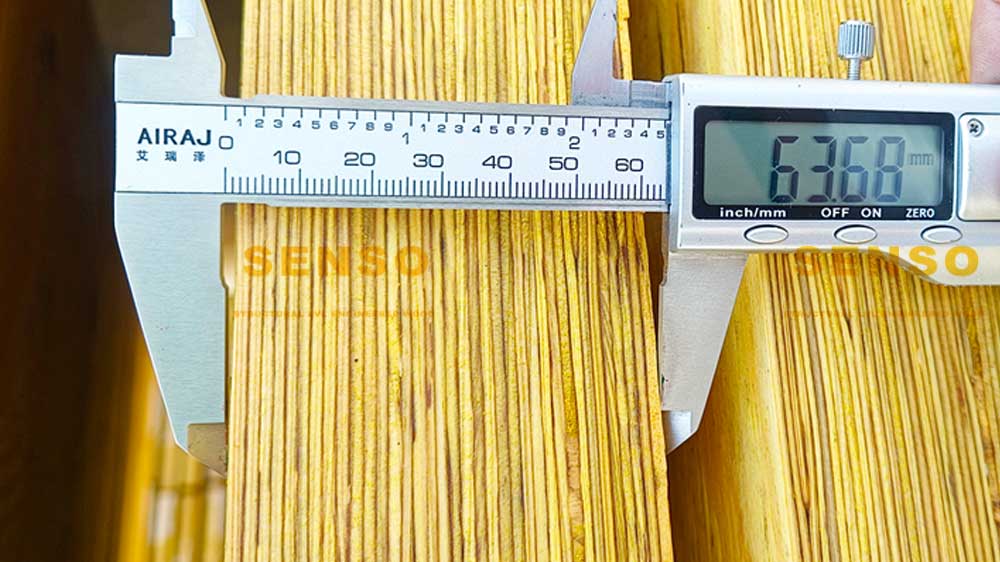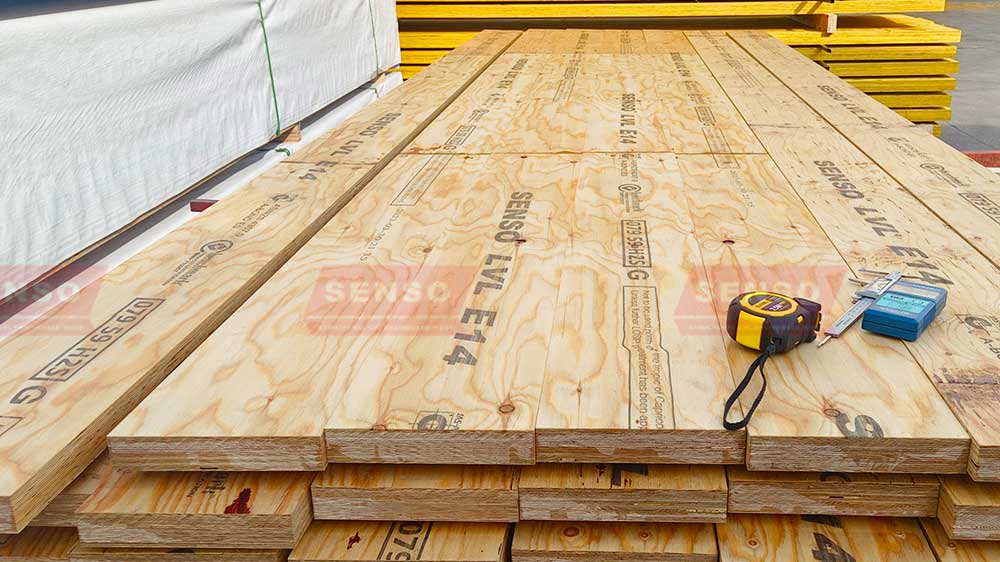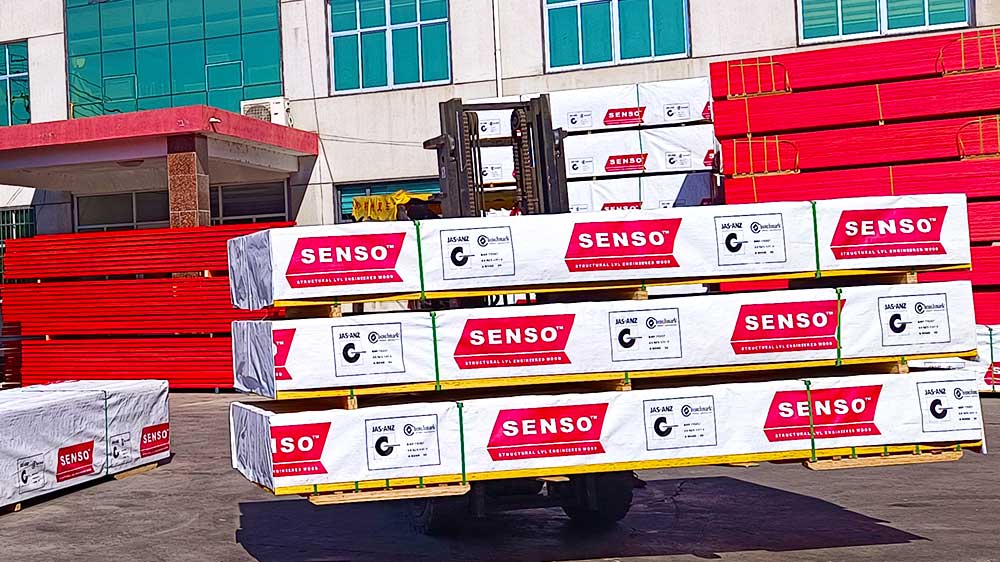Laminated Veneer Lumber (LVL) is a critical component in construction, particularly in framing and structural applications. As with any building material, it comes in various sizes, hence the term “LVL sizes”. Understanding these dimensions is vital for building materials wholesalers and construction sites to ensure they choose the right product for their specific needs.

LVL is an engineered wood product made from multiple layers of thin wood. It is bonded together with durable, moisture-resistant adhesives. Due to its design, LVL has high strength, stiffness, and dimensional stability, making it an ideal choice for beams, headers, and edge-forming material.
In terms of LVL sizes, there’s a broad range, providing flexibility for different construction applications. Common thicknesses include 1 ¾ inches and 3 ½ inches, with depths ranging from 7 ¼ inches up to 24 inches. The length of LVLs can extend up to 60 feet, accommodating even large-scale building projects. However, the right size for a specific project will depend on various factors, including the load it will bear and the span it must cover.
Importance of Proper LVL Size Selection
The selection of proper LVL sizes is a critical step in the construction process. Misjudging this can lead to structural instability or even failure, causing safety hazards and unnecessary costs. A larger size may provide more strength, but it also comes at a higher cost and may be unnecessary for the project.
On the other hand, opting for a smaller size might reduce costs initially but may lead to structural issues down the line.
Hence, it’s imperative to understand the project requirements before deciding on the LVL size. This process often involves a thorough evaluation of the planned structure, the expected load it will carry, and the span the LVL will cover. For this reason, it’s often best to work with a structural engineer who can provide accurate calculations and recommendations.
A well-thought-out selection of LVL sizes will not only ensure a sturdy structure but also contribute to the longevity of the project. It’s a critical step that combines technical understanding, practical application, and safety considerations.
Factors Influencing LVL Size Selection
When choosing the appropriate LVL sizes, several factors come into play. These include the load-bearing capacity, span length, and spacing between members. It’s worth noting that the load a piece of LVL can support is directly proportional to its depth. Therefore, the longer the span or the heavier the load, the deeper the LVL should be.
Another aspect to consider is the type of load that the LVL will bear. There are two primary types: live loads and dead loads. Live loads are temporary and can change over time, such as furniture or occupants in a building. Dead loads, on the other hand, are constant and include the weight of the structure itself, like walls and roofing. A correct estimation of both loads is crucial when determining the suitable LVL size.
Spacing is another vital factor. LVLs placed closer together can support more weight, allowing for smaller sizes. Conversely, if the members are spaced further apart, a larger size might be necessary to compensate for the added stress.

Ensuring Accurate LVL Sizing
Accurate LVL sizing isn’t just a matter of guesswork. It involves careful calculation and planning. For this reason, many building professionals rely on span tables or software tools provided by LVL manufacturers. These resources take into account the various load factors and provide size recommendations based on those inputs.
Remember, it’s not just about picking the largest size available. It’s about selecting the right size for the job. Over-engineering can lead to unnecessary expenses and potential complications during the construction process. But under-engineering could result in a lack of structural integrity, safety issues, and potential building code violations.
In addition to these tools, consultation with a structural engineer can also be beneficial. These professionals are trained to understand the intricacies of building loads and can provide expert guidance on the appropriate LVL sizes for a project.
LVL Sizes and Sustainability
An interesting aspect of LVL sizes pertains to sustainability. With growing awareness about the environmental impact of construction practices, the selection of building materials has become a critical aspect of sustainable design.
Laminated veneer lumber is a great choice in this regard. Since LVL is made from thin layers of wood glued together, it uses less wood than traditional lumber for the same dimensions. This means fewer trees are required to produce LVL of the same size, reducing the overall ecological footprint of the construction.
Moreover, by utilizing smaller pieces of wood and bonding them together, LVL allows for a more efficient use of forest resources, helping to conserve our precious woodlands.

LVL Sizes: Vital for Construction Success
In conclusion, understanding LVL sizes is essential for wholesalers, construction site professionals, and anyone involved in building construction. It influences the structural integrity, cost-effectiveness, and even the environmental impact of the projects.
Choosing the right LVL sizes requires understanding the nature of the load, the span length, and the spacing of the members. Various tools and professional guidance can aid in this process, ensuring the construction is not only robust but also compliant with building codes. As LVL is made from renewable resources and utilizes less wood than traditional lumber, it also offers a sustainable choice for eco-conscious builders.
The journey from forest to frame, via the process of laminating thin layers of wood into durable, load-bearing LVLs, is a testament to human ingenuity. It’s a process that brings together the raw beauty of nature and the refined precision of engineering, resulting in a material that is as versatile as it is robust. That’s the power and potential of understanding SENSO LVL sizes, and it’s why they’ll continue to be a staple in the construction industry.
Post time: Aug-16-2023

